7/10/2010 (Sat) morning Jamaica Bay Wildlife Refuge (JBWR)
1. Yellow warbler and robin
The location is probably a nest of robins. My approaching kept the 2
robins calling for a long time; attracting other birds.
This yellow warbler cannot resist its curosity and
came to check.
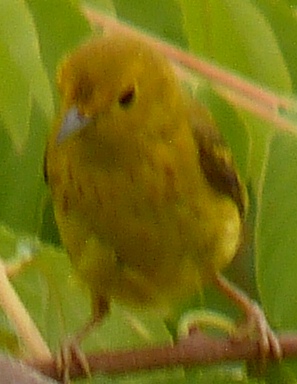
A female robin may raise several broods each summer, from April through July
May until September. The nest built for the first brood may be reused for subsequent broods.
[1a]
[1b]
Number of clutches (broods) per breeding season
American robin (2-3)
[2]
[3]
House sparrow (2-4)
[4a]
[4b]
[4c] ; (3-5)
[[5]
Bluebird (1-4)
[6]
Yellow warbler (1)
[7]
[8]
Cedar Waxwing
(1-2)
[9]
Barn swallow (2)
[10] ; in Europe
[11]
Tree swallow (1)
[12]
Brown thrasher (1)
[13]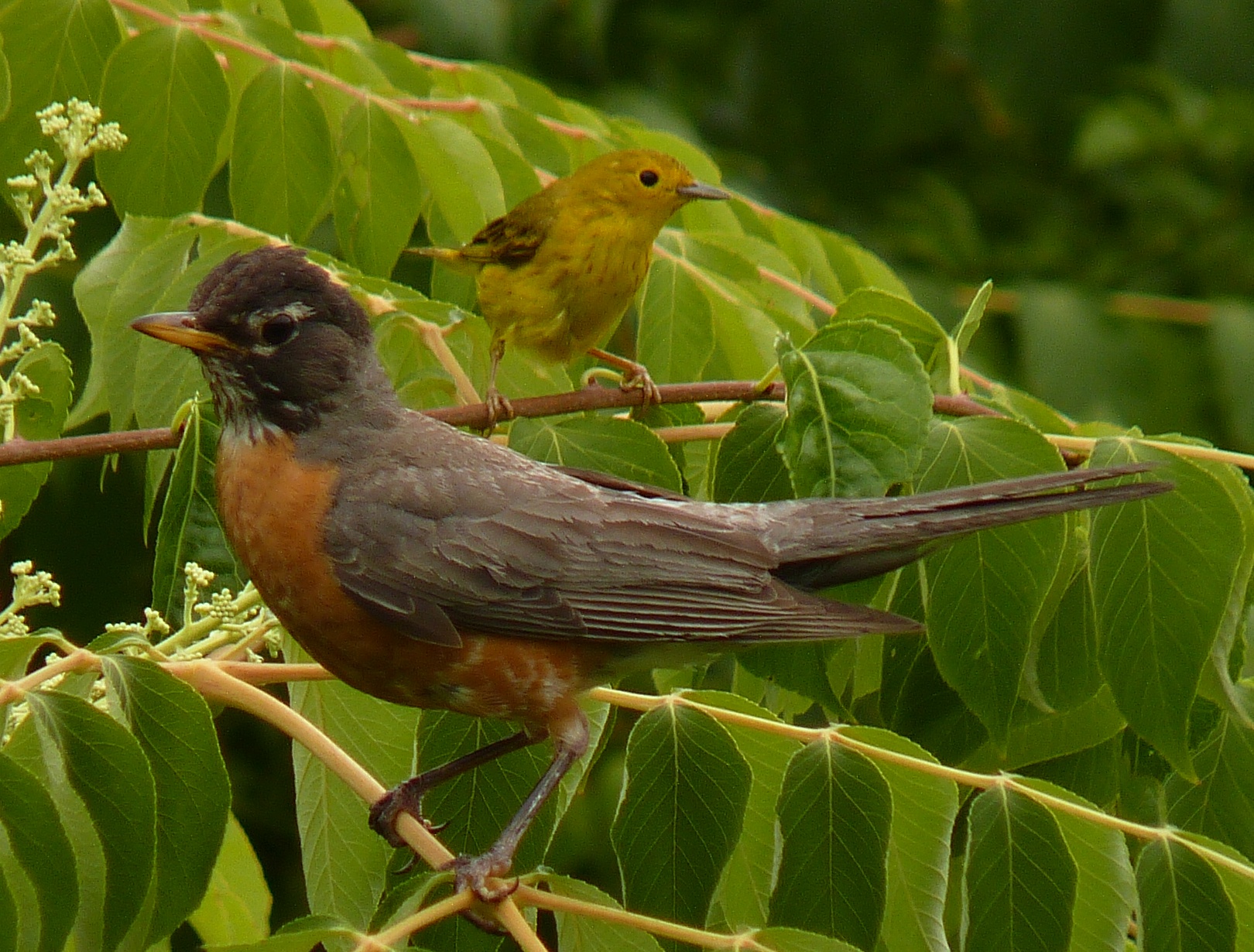
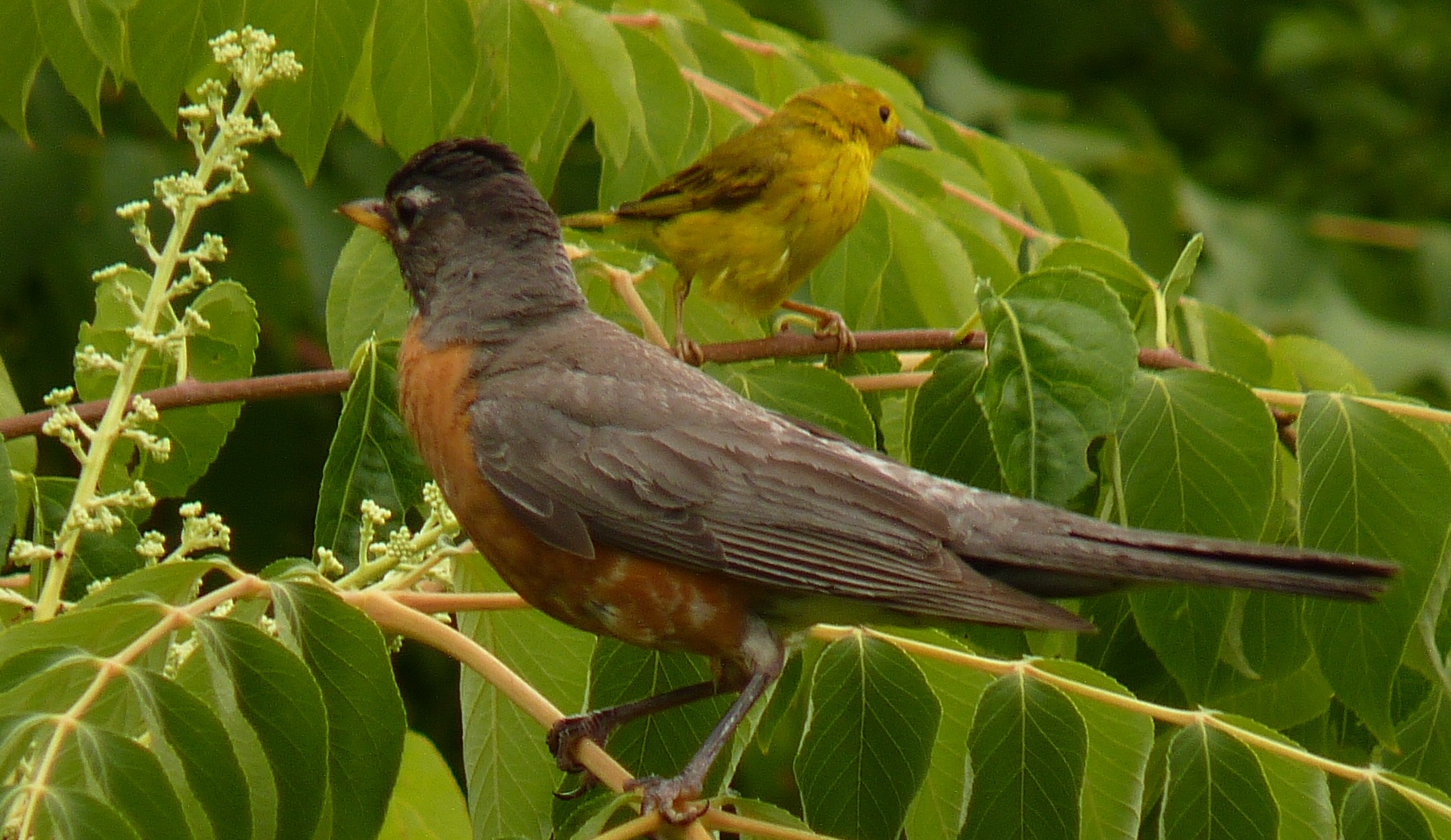
2. Cedar Waxwing
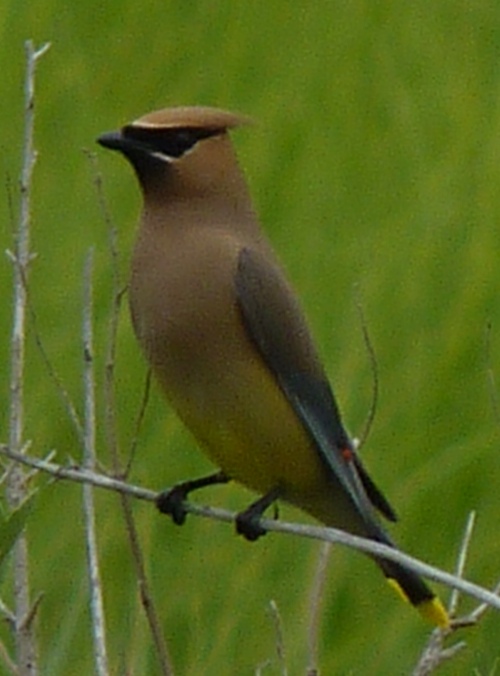
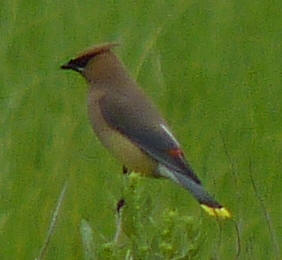
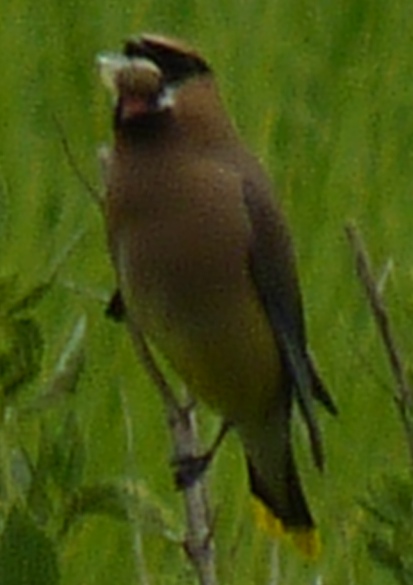
First time I saw at
Rouge Park, Toronto, 6/28/2008;
Then Jamaica Bay Wildlife Refuge (JBWR), NYC, 7/4/2008 and so on.
3. Song sparrow
<1>
<2>
4. Brown thrasher
Gray catbirds (
Dumetella
carolinensis) have been documented visiting brown thrasher nests to break
the eggs. Two hypotheses are proposed to explain this heterospecific egg
destruction behavior: resource competition and egg predation. These birds both
live in shrubs and have similar timing in breeding. They compete for the
resources of this habitat. Once the catbird has broken the egg, usually it will
consume the contents. This egg consumption is consistent with the proposed egg
predation hypothesis.
[13]
Picture






